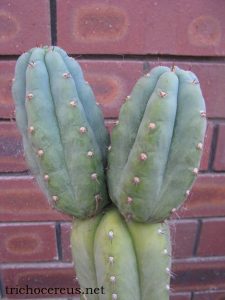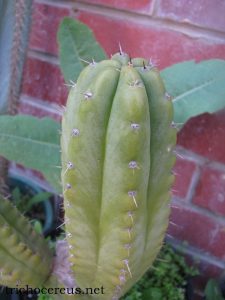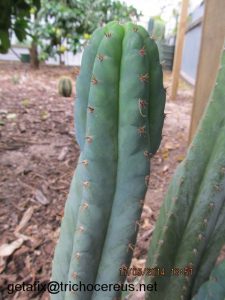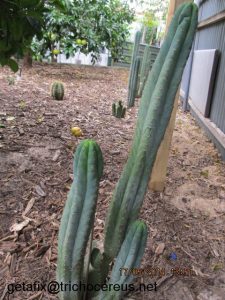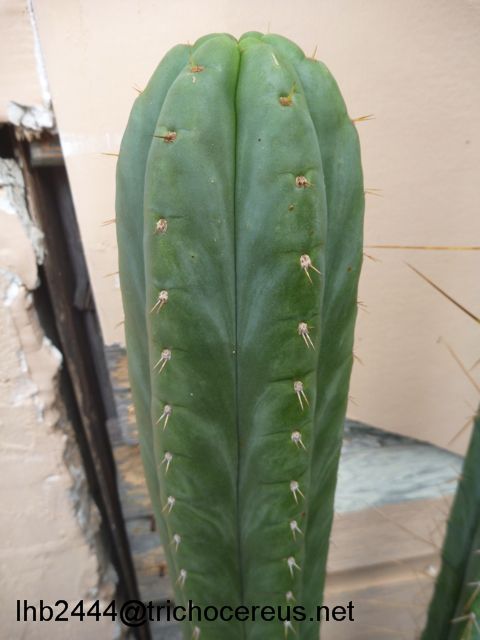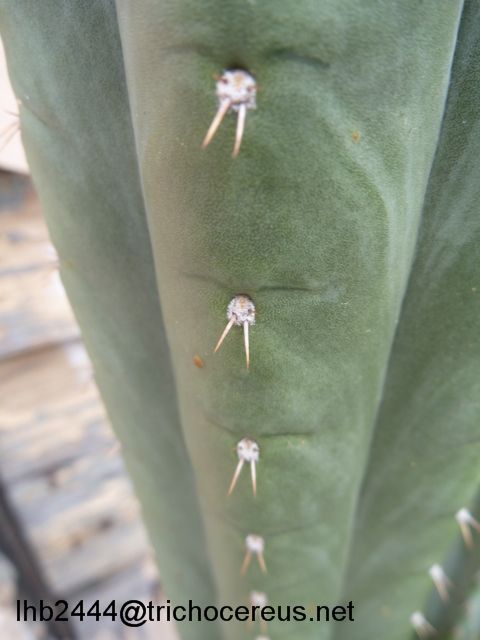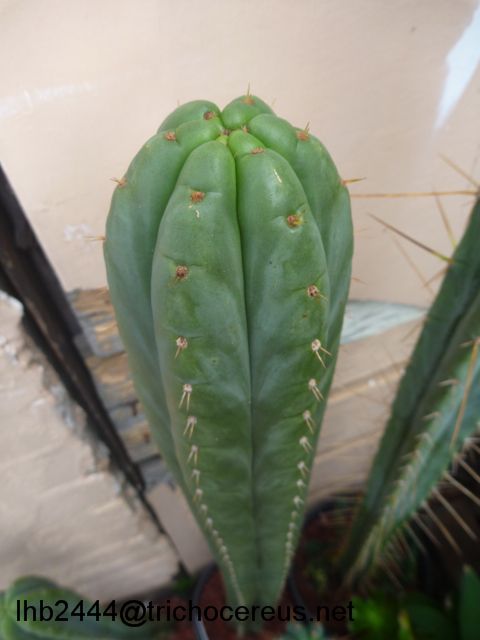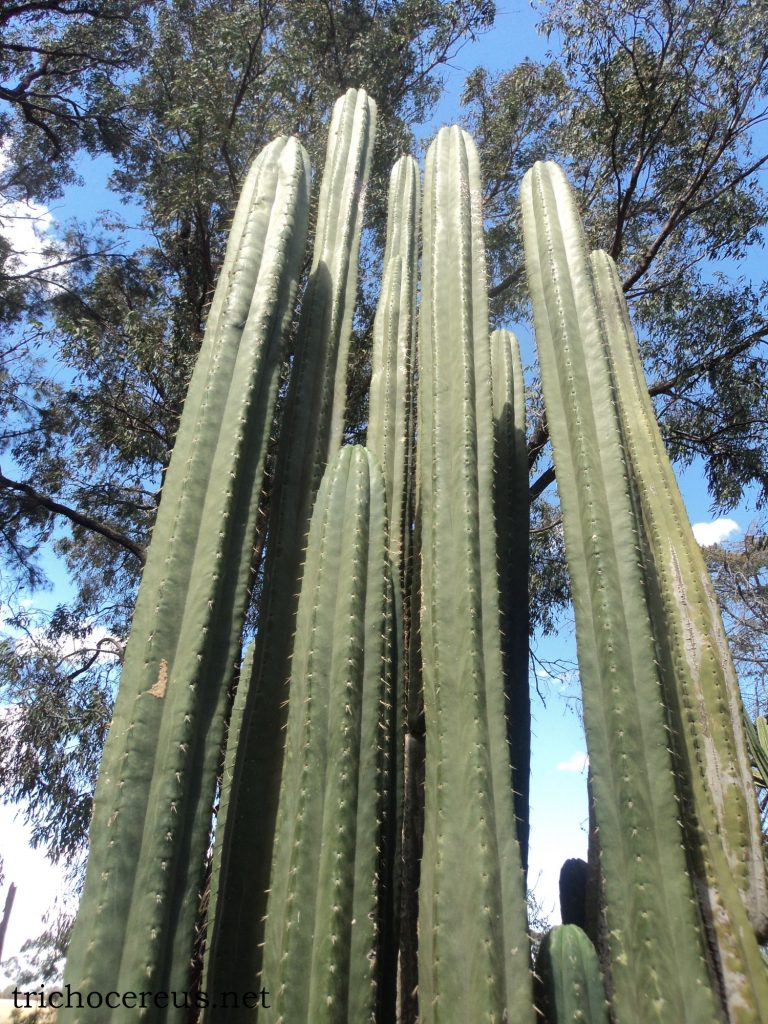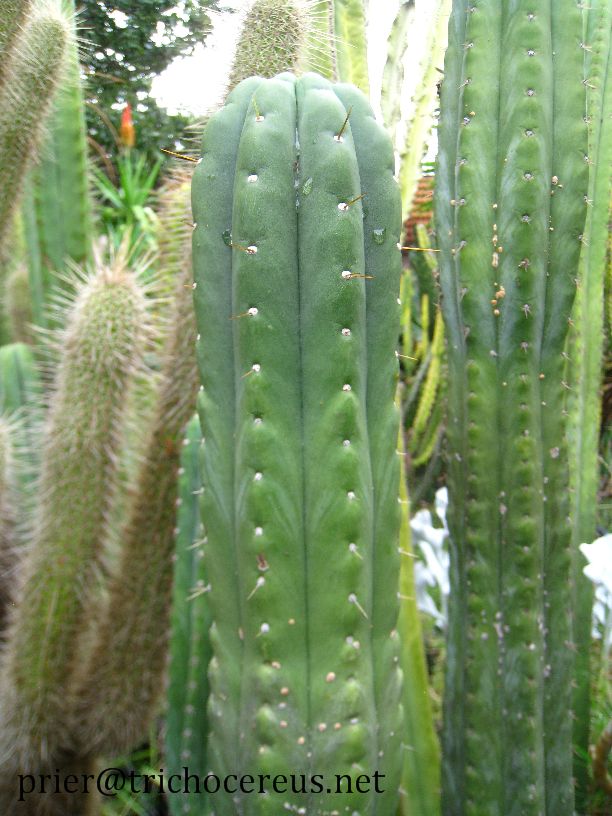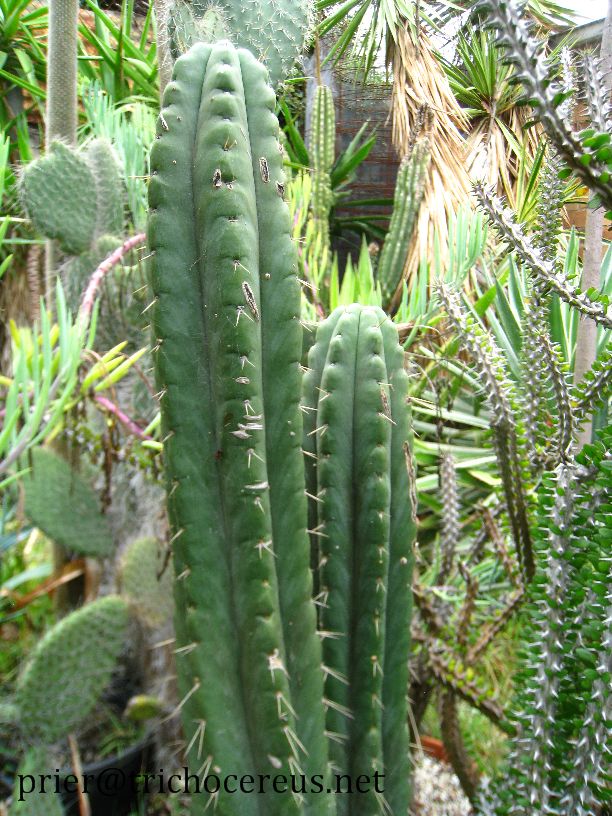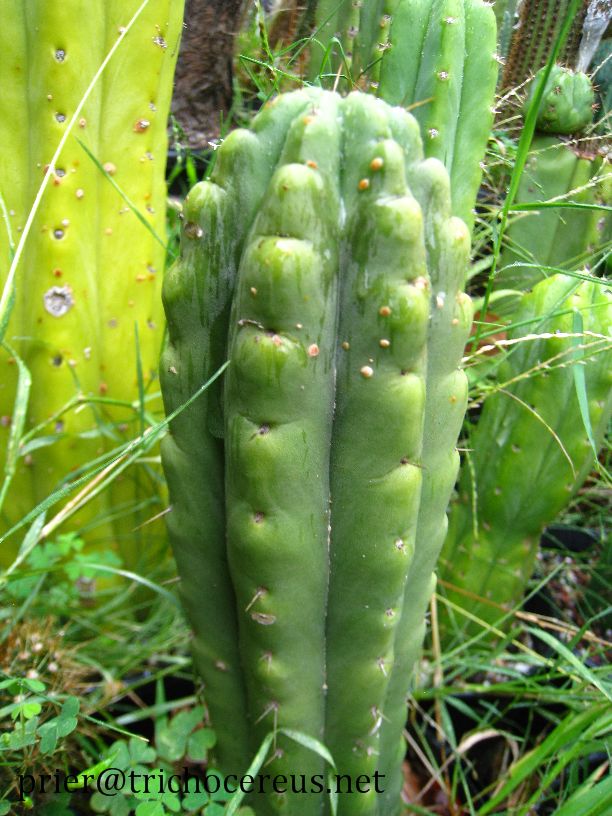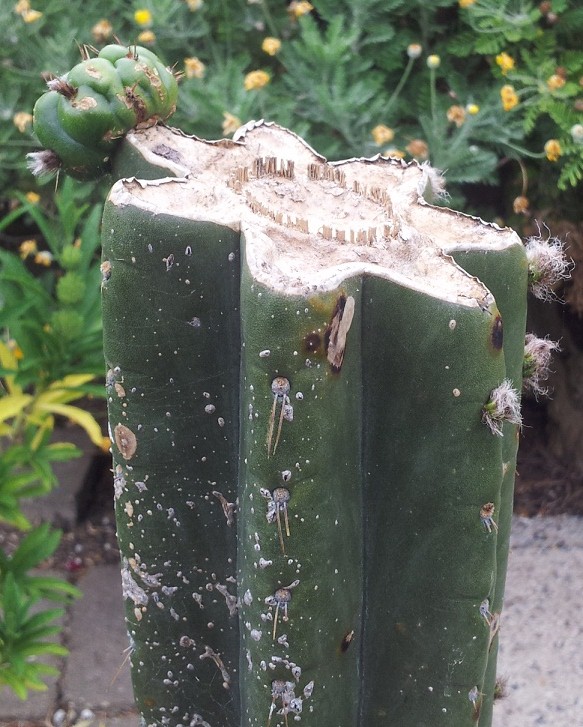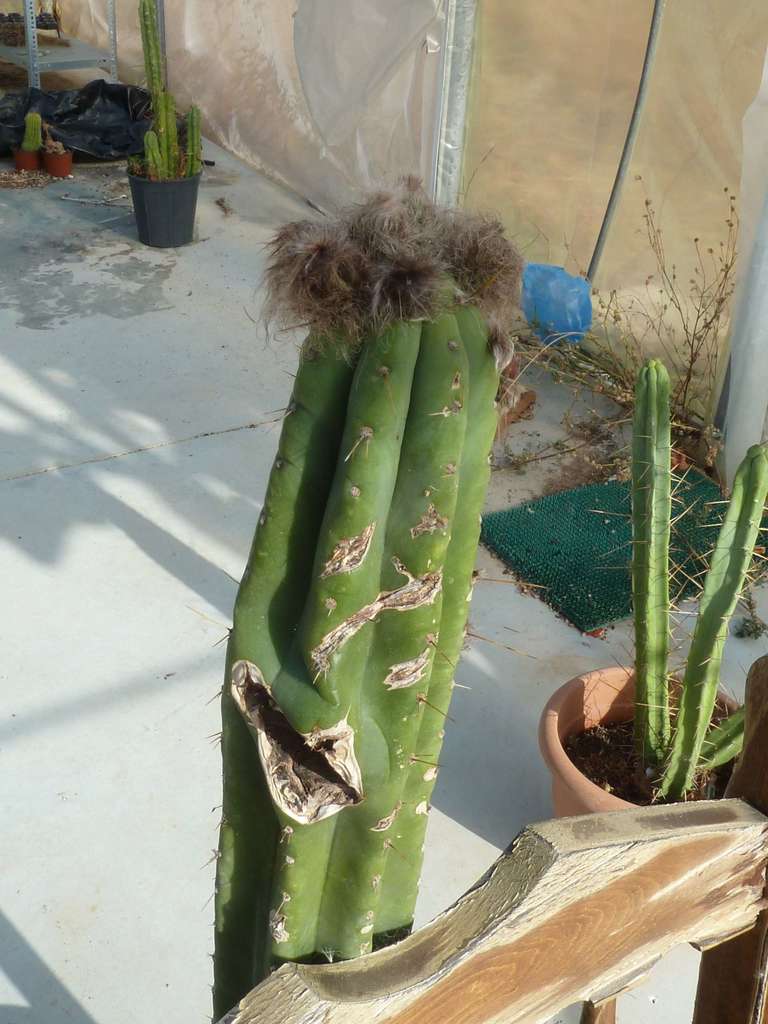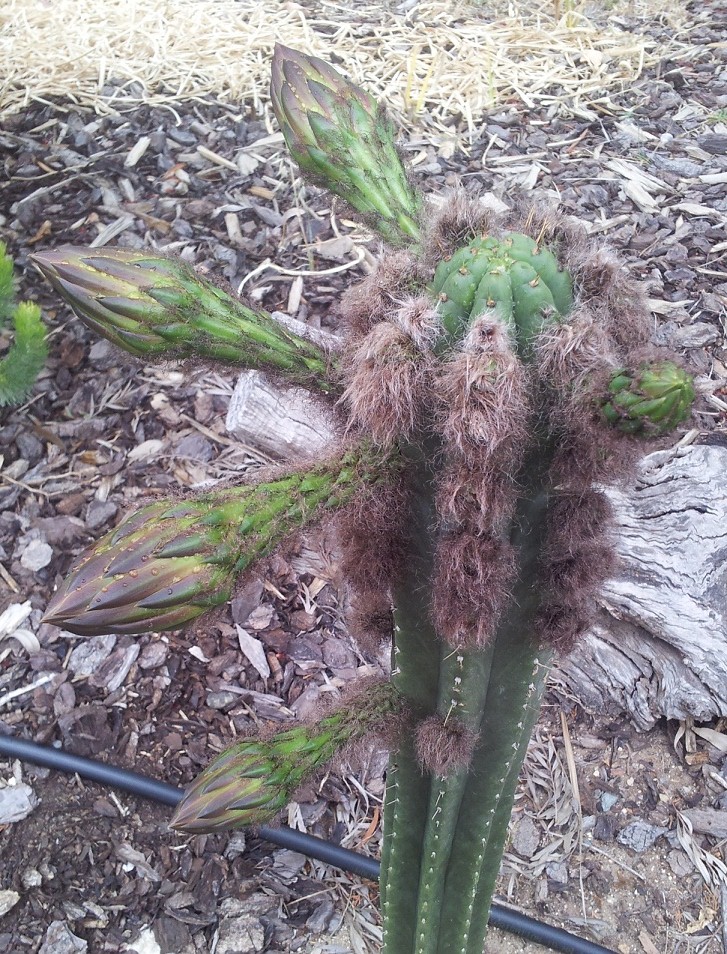Trichocereus Macrogonus (Fields)
This plant is part of the legendary Fields collection in Australia, which was started around the 1930s. This was long before all the import restrictions on plants and cacti were put in place. The garden is now owner by Robert Field, who took over the garden from his father, the original starter of this collection. I am currently trying to get in touch with the family in order to get some more pics of their amazing collection for this site. From what I heard, they are extremely friendly people and if someone knows how to get in touch with them, please let me know.
Now back to the history of the Fields Macro. Harry Blossfeld, who was a field botanist, offered some cactus shares to finance his 1935 South America Expedition and Mr. Field was one of the people who took the chance to invest in it. In return, he received some very cool cacti that grew in what is known as the „Field´s Collection“. In addition, Mr. Field seems to have bought some plants or seeds from Friedrich Ritter, because some of their plants were (at least officially) discovered by Ritter, such as Trichocereus Knuthianus.
This Trichocereus Macrogonus is one of the oldest confirmed specimens that are labeled as such. There are a lot of plants labeled Trichocereus Macrogonus on the market today, but the great confusion surrounding the name makes it very hard to differentiate between the ones that were originally called „Trichocereus Macrogonus“ and the ones that modern nurseries or seed collectors just adopted because certain types are generally accepted as „Trichocereus Macrogonus“. But those are usually very little different from Trichocereus Peruvianus, which is why I think both names are synonymous. But that´s another story. The original Trichocereus Macrogonus was never found again and today no one really knows what plant was originally meant with the description. And because of that, a Trichocereus Macrogonus that goes back to the 1930s is a great thing! If you are interested in the history of Trichocereus Macrogonus, have a look at my friend Trout´s article here on SAB.
Personally, I think the Fields Macrogonus looks very much like a Matucana Peruvianus and it´s very possible that the Matucana type was originally called Macrogonus, while the others were called Peruvianus. Of course that´s not really correct because the whole genus Trichocereus is extremely variable, but it would be a theory about the separate description of Trichocereus Macrogonus.
Pictures: By Rodni! Thank you very much!






Trichocereus Macrogonus (Fields)

